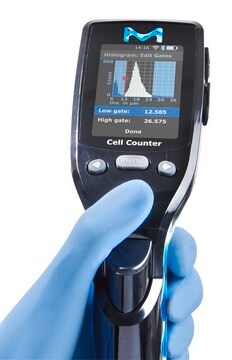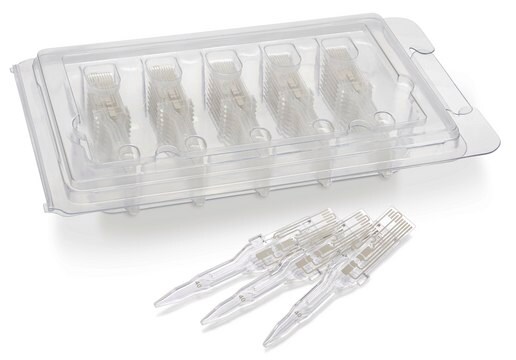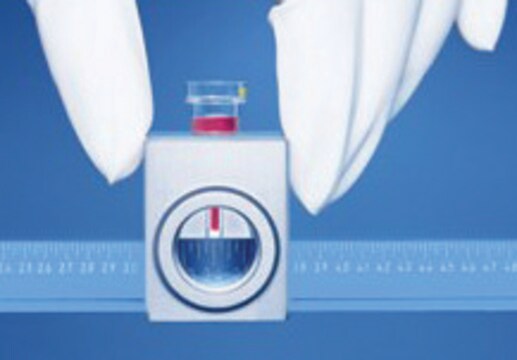PHCC20040
Scepter 2.0 Handheld Automated Cell Counter
Rapid cell counts in a handheld easy to use format, includes pkg of 40 μm Scepter Cell Counter Sensors
About This Item
Productos recomendados
fabricante / nombre comercial
Scepter
técnicas
cell counting: suitable
tamaño de partícula
3-18 μm
compatibilidad
for use with cells sized 4-12 μm
Condiciones de envío
ambient
Descripción general
The Scepter cell counter’s screen displays:
Cell concentration
Average cell size
Average cell volume
Histogram of size or volume distribution
This system is intended for research use only and has been tested with cell types representative of those in use today.
FREE PACK OF 40μM Sensors included.
Aplicación
Cell Culture
Componentes
1 Test Bead Vial
1 USB Cable
1 Downloadable Software
2 O-rings
50 Sensors (40µM)
Certificados de análisis (COA)
Busque Certificados de análisis (COA) introduciendo el número de lote del producto. Los números de lote se encuentran en la etiqueta del producto después de las palabras «Lot» o «Batch»
¿Ya tiene este producto?
Encuentre la documentación para los productos que ha comprado recientemente en la Biblioteca de documentos.
Los clientes también vieron
Artículos
How do you assess the state of your cell culture? We’ve got some best practices to share.
Assessing size distributions of cellular populations with the Scepter™ cell counter provides a quick, simple method for tracking T-cell differentiation.
Using the 40 µm aperture sensor, the Scepter cell counter can accurately and precisely count a broad range of cell types, including small cells such as PBMC and red blood cells.
The Scepter handheld, automated cell counter provides a rapid, reliable alternative to traditional SCC analysis in dairy milk.
Protocolos
The Scepter used in an application to count yeast cells.
The Scepter™ cell counter uses the Coulter principle of impedance-based particle detection to reliably and accurately count every cell in your sample.
Nuestro equipo de científicos tiene experiencia en todas las áreas de investigación: Ciencias de la vida, Ciencia de los materiales, Síntesis química, Cromatografía, Analítica y muchas otras.
Póngase en contacto con el Servicio técnico



